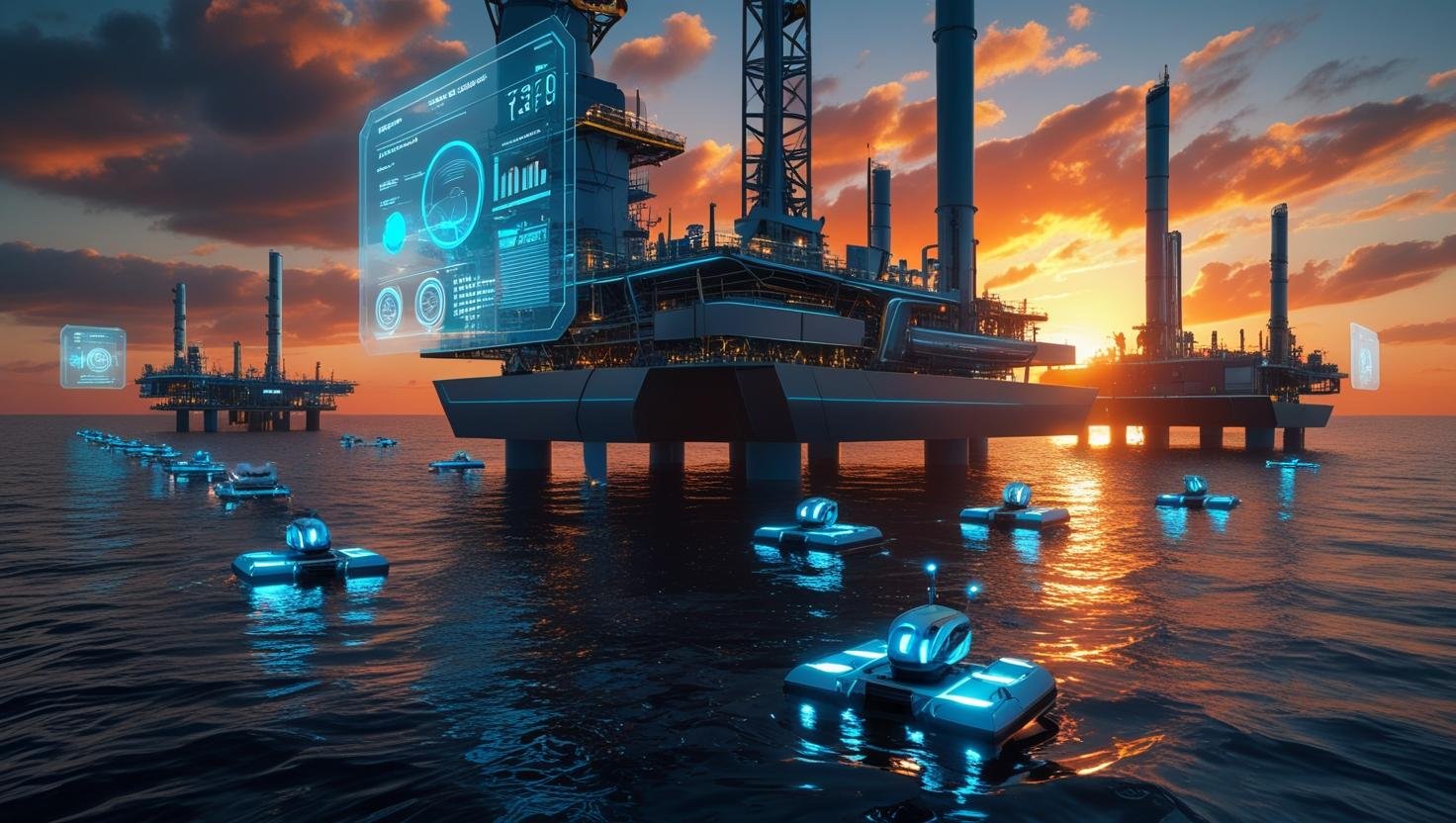What Is Deep Offshore Technology?
Deep offshore technology refers to the advanced systems,What Is Deep Offshore Technology? tools, and engineering strategies used to explore, extract, and manage oil, gas, and other resources from deep and ultra-deep waters—typically at depths greater than 500 meters (1,640 feet). These challenging environments require equipment and infrastructure capable of withstanding high pressure, low temperatures, and corrosive underwater conditions.
Why Deep Offshore Technology Matters in the UK & US
Economic and Energy Security Impacts

In both the UK and the US, deep offshore reserves hold significant untapped energy potential. For example:
Gulf of Mexico: Deepwater oil accounts for roughly 14% of U.S. oil output and is projected to increase through 2026.
North Sea (UK): Key fields such as Clair Ridge contribute to national energy security, though decommissioning costs remain a challenge. The UK is increasingly leveraging AI tools to optimize this process, potentially saving billions of pounds by 2027.What Is Deep Offshore Technology?
By tapping into these reserves, both nations reduce dependence on imports and improve long-term energy resilience.
Leadership in Innovation
UK and US firms lead globally in:
High-pressure, high-temperature (HPHT) systems
Floating production platforms like FPSOs and Tension-Leg Platforms (TLPs)
Use of Remotely Operated Vehicles (ROVs), Autonomous Underwater Vehicles (AUVs), and the Subsea Internet of Things (SIoT)
Digital twins and AI-driven analytics for asset management
Core Components of Deep Offshore Technology
Subsea Engineering and Production Systems
Subsea wells, pipelines, manifolds, and trees are deployed on the ocean floor to extract and manage resource flows. These components are built using advanced materials like composite risers to withstand HPHT environments.
Floating structures such as FPSOs, TLPs, and ETLPs enable production at depths exceeding 1,000 meters. A notable example is the Magnolia ETLP in the Gulf of Mexico, operating at around 1,432 meters.What Is Deep Offshore Technology?
Drilling Vessels and Rig Technology
Modern offshore rigs use dynamic positioning systems to remain stable during operations. Extended-reach drilling technologies allow access to reservoirs located thousands of meters beneath the seafloor from a single location, improving efficiency and minimizing surface infrastructure.
Robotics, AUVs & Subsea IoT
ROVs: Tethered vehicles controlled from surface vessels, used for maintenance and inspection
AUVs: Independent underwater drones used for geological surveys, mapping, and inspection
SIoT: Real-time data networks monitor critical variables like pressure, corrosion, and temperature using wireless acoustic and optical systems
Digital Twins & AI-Driven Analytics
Digital twin technology creates real-time, virtual models of offshore assets, helping engineers predict equipment failures and optimize maintenance schedules.
AI-driven analytics also play a growing role in improving operational efficiency, forecasting production, and lowering decommissioning costs—projected to save 9–15% in some projects.What Is Deep Offshore Technology?
Benefits of Deep Offshore Investment
Access to large reserves: Ultra-deep fields may contain billions of recoverable barrels.
Improved energy security: Reduces dependence on politically unstable regions.
Lower carbon intensity: Deepwater operations often produce less CO2 per barrel than onshore shale.
Tech transfer: Innovations benefit other sectors, including renewable offshore wind, marine biology, and seabed mining.
Challenges and Risks
Economic and Financial Uncertainty
Deep offshore projects are capital-intensive, with costs often reaching billions of dollars. Project viability depends on reservoir quality and long-term oil prices.
Safety and Environmental Concerns
Harsh subsea environments require extremely reliable equipment. Failures can result in disasters like Deepwater Horizon, highlighting the need for stringent safety protocols.What Is Deep Offshore Technology?
Additionally, oil spills in deepwater locations are much harder to contain and clean up, posing major ecological risks.
Regulatory and Cybersecurity Challenges
Regulations in the US and UK now require independent reviews and certifications for HPHT equipment.
Cyber threats targeting control systems (like SCADA and SIoT) also present operational risks, with potential consequences including system failures and environmental damage.
Real-World Examples
Chevron’s Anchor Project (Gulf of Mexico)
Launched in 2024, this project uses 20,000-psi-rated systems to operate at around 34,000 feet below sea level. It is expected to add up to 75,000 barrels of oil per day, enhancing US energy output significantly.
UK Decommissioning with AI
The UK is using AI technologies to reduce decommissioning costs in the North Sea by up to 35%. This not only saves money but also accelerates the transition to cleaner technologies.What Is Deep Offshore Technology?
Platform Deployments
Magnolia ETLP (Gulf of Mexico): One of the deepest operational TLPs
Hutton TLP and various FPSOs (UK): Demonstrate the UK’s longstanding technical expertise in deepwater operations
FAQs on Deep Offshore Technology
Q: What defines “deep offshore”?
A: Water depths greater than 500 meters (~1,640 feet). Ultra-deep is generally beyond 1,500 meters (~4,920 feet).
Q: Why is this technology important now?
A: Energy demand, geopolitical tensions, and the need for stable oil supplies have renewed interest in deepwater reserves.
Q: Is it environmentally sustainable?
A: While lower in emissions than some methods, deepwater drilling is still a fossil fuel operation and raises environmental concerns, especially around spills.
Q: What sectors benefit from offshore tech advances?
A: Besides oil and gas, improvements in robotics, materials, and sensors support offshore wind, marine research, and deep-sea mining.
